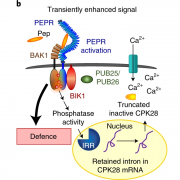
Dynamic regulation of Pep-induced immunity through post-translational control of defense transcript splicing (Nature Plants)
Plant Science Research WeeklyIn plant immunity, signal transduction is tightly modulated through mechanisms including controlled stoichiometry of key regulators. Dressano et al. identified the novel IMMUNOREGULATORY RNA-BINDING PROTEIN (IRR) as a negative regulator of immunity in both maize and Arabidopsis through a screen of Plant…
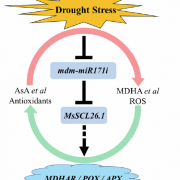
The Apple miR171i and its target SCL26.1 enhance drought tolerance (Plant Physiol.)
Plant Science Research WeeklyDrought is one of the most important abiotic factors affecting plant growth and development. MicroRNAs are a class of small nuclear RNAs (snRNAs) consisting of 21-24 nucleotides, that play critical roles in many biological processes by regulating target gene expression. Apple is one of the most economically…
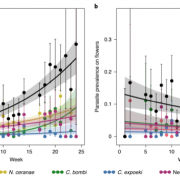
Driving factors of disease spread in natural plant-pollinator communities (Nature Ecol. Evol.)
Plant Science Research WeeklyDisease spread within species-rich communities is hard to predict and prevent due to the dynamic transmission of parasites between multiple hosts that change in abundance and composition over time. To better understand the temporal dynamics of bee parasites in communities of plants and pollinators, Graystock…
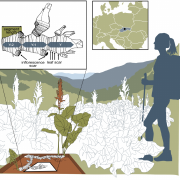
Alpine plant growth and reproduction dynamics in a warmer world (New Phytol.)
Plant Science Research WeeklyClimate warming affects plant performance in warm and dry regions. In cold regions, warming stimulates growth and reproduction, but its effects can vary depending on location and species. Whether herbaceous plants can adapt to increasing temperatures is unclear and a matter of concern. In this study…

Plant Science Research Weekly: August 7, 2020
WWR Full PostReview: Potential applications of plant biotechnology against SARS-CoV-2
For those of you about to start teaching again, here’s a great article to share with your plant science students, showcasing the ways that plant biologists are contributing to the international efforts to develop diagnostic…
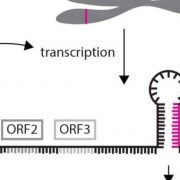
Small but powerful: miRNA-derived peptides promote grape adventitious root formation
Blog, Plant Physiology, Plant Physiology: News and Views, ResearchMagdalena Julkowska, King Abdullah University of Science and Technology
[email protected]
ORCID: 0000-0002-4259-8296
Although plant genomes typically contain hundreds of miRNA encoding genes, we know little about how miRNA expression is regulated (Wang et al., 2019). The expression…
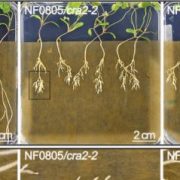
Peptide-Receptor Signaling Pumps the Brakes on Auxin Biosynthesis and Ethylene Signaling to Harmonize Root Growth and Nodulation
Blog, Research, The Plant Cell, The Plant Cell: In BriefNitrogen (N) is the most abundant element in Earth’s atmosphere. However, plants must capture this essential element from soil through their roots. To do this, legume roots forge symbioses with rhizobia to initiate nodule development. Root nodules provide rhizobia an environment suitable for converting…
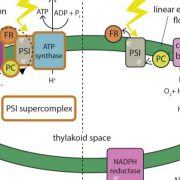
Extreme Engineering: How Antarctic Algae Adapt to Hypersalinity
Blog, Plant Physiology, Plant Physiology: News and Views, ResearchMagdalena Julkowska, King Abdullah University of Science and Technology
[email protected]
ORCID: 0000-0002-4259-8296
Photosynthetic organisms can be found across most environments on Earth, including the most extreme ones. The McMurdo Valleys in Antarctica are among the driest…
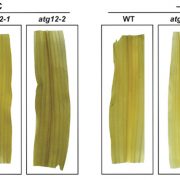
The Multifaceted Roles of Autophagy in Fixed-carbon Starvation
Blog, Research, The Plant Cell, The Plant Cell: In a NutshellMcLoughlin et al. uncover the critical roles of autophagy in recycling amino acids and nitrogen-rich nucleotides, adjusting respiratory substrates, and the retention of assimilated nitrogen in maize during fixed-carbon starvation. The Plant Cell (2020) https://doi.org/10.1105/tpc.20.00226
Background:…

